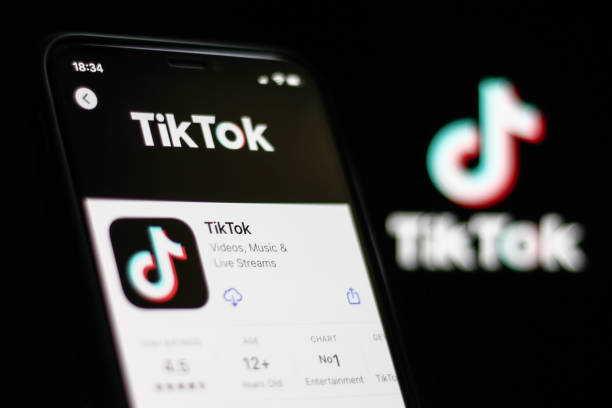Marketing as a whole is an endeavor that evolves with time advancement. You cannot compare the marketing techniques of the 90s to what we have now. The reason is apparent: things have changed, and you need to change with it as a marketer.
You might ask what exactly has changed and what you need to change. First, you have to look at the rise of social media. The advent of social media has shifted the focus of marketing slightly. Traditional forms of adverts and marketing used to be the bane of marketing. TV, radio, and print media such as newspapers were the go-to places for marketers.
Social media, however, soon became the main thing. With tons of people having a solid presence on social media, it only made sense that marketers created ways to advertise brands and products on social media.
Advertising on social media also has nuances, but it isn’t so different from some of the techniques involved in Traditional marketing. However, soon social media had a new form of marketing. This form was going to take a different route. This new form was Content Marketing.
If you are a marketer and you are still struggling with content marketing, all that might be coming to an end soon. With this Guide to content marketing we are about to provide, you should be able to create and implement content marketing strategies.
What is Content Marketing?

Content Marketing can be considered a strategic approach to marketing that aims to create and distribute relevant, consistent, and valuable content to draw in customers and keep these customers. The content in question can be in the form of articles, videos, podcasts, etc. This approach to marketing helps marketers build expertise, promote the brand or its product and remain on the mind of the public.
Content marketing is typically a long-term process that emphasizes building a solid relationship with your brand’s target audience. To accomplish this goal, you require top-notch content that is relevant to the needs of your audience consistently.
Content marketing structures aren’t usually created to yield quick results; instead, they aim to generate leads while improving brand recognition. Consistent use would lead to customers seeing your company as a partner invested in their success and a reliable source of guidance on specific issues.
Once you have established this relationship with your target audience, you can almost be sure that your product will be the first they run to when a need arises.
To many of us, Content marketing might feel like a new marketing technique, primarily when we are already used to Traditional marketing and social media marketing concepts. However, when you think that valuable content and storytelling are at the heart of Content marketing, it dawns on you that this technique has been around for decades, centuries even. The term used to describe it is relatively new so we can be forgiven for this mistake.
Content marketing has three main categories into which content marketing efforts can be put. These are; hybrid, online and offline. We will discuss these in more detail later. First, we need to answer the question ‘why should you use content marketing?’.
Why should you use Content Marketing?

Trends are essential in the marketing business. Now and then, a sensation or new technique is very popular with the general public. It would help if you continually keep your ears and eyes peeled for trends as a marketer. These trends can differentiate between a successful marketing campaign and a futile marketing effort.
It is a trend these days for brands to employ content marketing strategies. Companies have been utilizing this strategy for years, and it has been a strategy that has yielded results consistently. Companies with successful Content marketing have been known to gain a significant advantage over their competitors. Some numbers to validate this;
– Brands with useful blogs get 67% more leads than their competitors without one.
– 47% of customers go through relevant content before contacting a sales representative.
– A 30% growth has been recorded for companies making use of content marketing
However, not all trends are suited for all businesses. So, the real question is ‘Is content marketing ideal for your business?’. This is a concern because it might have worked for other businesses, but it might not work for yours. So, how do you discern if it is?
First, we must consider why some businesses fail when they employ Content marketing. To understand this, it is essential to look at the priorities of most companies using content marketing. Most of these companies’ priorities are to create engaging, exciting, easy to understand what makes content effective and valuable, create visual content, repurpose content, and optimize content.
The reason the priorities listed above are what they are is straightforward. These companies do not seem impressed with the state of their content marketing. And this is so because of the competition out in the marketing environment.
So many companies are investing in content marketing, which has led to content saturation. Hence, it is no surprise that multiple companies are struggling to generate enough quality content to meet up with the demands of the market.
This might sound discouraging to you, but it shouldn’t. This is a great opportunity. While there is a lot of content out there, a lot of these are mediocre posts, poor infographics, and underwhelming videos. You can take advantage of this by creating content that will thrill your audience and generate the right leads for your business.
Content marketing would exceptionally be critical to your brand when executed properly.
Furthermore, let us take a look at the four steps of the buying cycle;
– Awareness: This is when the customer has a want, need, or issue, but they are not yet in the know of a solution.
– Research: Here, the customer knows a possible solution to their problem. However, they proceed to do their research on this solution before moving to the next step. For instance, an individual looking to purchase a smartphone would try to find out what types of smartphones are available to help them decide based on their needs.
– Consideration: The next step for the buyer is to compare the products from various sellers to ensure they have quality products at the right price.
– Buy: The customer has decided and then proceeds to complete the transaction.
Why did we have to consider this process? Traditional marketing is most vital when the buyer is at the two final steps. Content marketing, however, is very effective for the first two steps by providing content that educates the customers about the product they are considering.
Other benefits of Content marketing include its incredible Return on Investment when appropriately executed, it supports digital marketing channels, creates additional material for social media marketing, and is essential for optimizing search engines to generate inbound links.
Examples of Content Marketing
Many examples of content marketing result from the various forms of content available. The models will give you insight into what you can do with Content marketing.
Videos: YouTube is the second largest search engine, just behind Google. And if you do not know what YouTube is, it is a platform that enables users to post and watch videos online. This is an indication of how effective video content is. Video as content is, however, still relatively untapped. Many marketers find this form of content marketing too expensive and challenging. However, there has been a fall in the prices of video equipment.

Podcasts: This form of content is surprisingly very effective. Podcasts can be listened to passively, leading to an increase in the number of podcasts out there. A single episode of a podcast of a series of one is packed with lots of information. And the best part is that listeners can get this information without giving it their full attention. Many marketers had experienced improvements in sales when they used podcasts as a means of marketing.

Books: To the untrained eye, books can only be used to sell themselves. To the enlightened, books can be a powerful marketing tool. Michael Ports, for instance, wrote a sales manual called Book Yourself Solid. The book was an excellent read for entrepreneurs and marketers. However, for the author, the book was more than just a guide for its readers; it is a marketing tool to bring clients to his coaching and speaking service. Pretty clever, right? You can do the same, and you don’t have to be the one to write the book for your company.

Infographics: This visual representation of data includes charts, graphs, and statistics. Infographics are very effective when done correctly. They can be shared on social media and websites for years and still look good. To get a good one, you can work with a company like Visua.ly. If you want to do it yourself, you can find some on Pinterest that relate to your business. Infographic preparation doesn’t cost much, but it can be time-consuming.

Webpage: You need to know that there are regular web pages and content marketing web pages. There are nuances to putting your content on a webpage. A content marketing web page should be in a manner that is fascinating to its viewers. Otherwise, it is just another webpage.

Online, Offline, and Hybrid Content Marketing
We did mention the main categories of Content marketing earlier. Now it’s time to shed more light on the matter. We would start with Offline content marketing.
1. Offline Content Marketing: It is easy to disregard anything that isn’t happening on the internet. You might even ask, “what isn’t on the internet these days?”. Well, sometimes, your customers aren’t on the internet. While your competitors are focusing on Online content marketing, you can take it a step further and have an Offline content marketing strategy in place.
Offline content marketing is marketing done outside the internet. Examples include print media, television, radio, in-person, or even door-to-door campaigns.
One of its most significant advantages is how easy it is for the content to be shared. Word of mouth is notoriously straightforward to spread. Other benefits of this form of marketing are how easy it can be to put out content for a target audience, and you don’t have to put out numerous amounts of content.
It does have some limitations, however. Due to the media used to distribute this content, there is a limit to how long or extensive these contents can be. Some of these limitations can be due to space issues or costs.
Effective ways to distribute offline content include;
– Speaking engagements
– Seminars
– Printed Publications – magazines, journals, newspapers, maybe even comics.
– Business cards
– Trade Shows
– Interviews
– Classes
You can explore more means of Offline content marketing and think of more ways to add value to the lives of your offline audience. It won’t be long till you realize how you’ve been missing out for so long.
2. Online Content Marketing: Content is generated and distributed online. This includes websites, blogs, affiliate networks, social media, and messaging apps. And on these various platforms, marketers can share texts, videos, graphics, and other forms of content.
Unlike Offline content marketing, its content doesn’t have limitations, and it is no surprise that companies prefer this form of content marketing. Online marketing also reaches a larger audience as you can have a blog post that brings in lots of internet traffic.
Sharing online content is also pretty easy. With one click of a button, you can share website links, videos, and images to thousands on the internet. Links are also crucial for SEO, which is pertinent to your content’s visibility.
With content being easy to share when using online content marketing, it is also easy for this content to go viral on the internet.
Examples of Online content marketing include; guides, eBooks, social media campaigns, text message campaigns, infographics, podcasts, videos, and so much more.
3. Hybrid Content Marketing: There is nothing wrong with combining online and offline marketing to get perfect results. You can eliminate the weaknesses of either of the two and capitalize on their strengths. For instance, you can use a social media campaign to promote an offline event.
You can host an online event and have viewers from their homes tweet in questions. This brings the audience closer to the event and gives it a more personal touch.
Conclusion
As a content marketer, feel free to explore the myriad opportunities presented to you. The best part is that most aspects of content marketing aren’t costly and can be distributed easily.
Ensure to create informative and engaging content. Be sure to look at your competitors that aren’t doing so well and learn from their mistakes while also improving on your strengths.
And we believe you should be able to go out there and be the best Content marketer you can be.
READ ALSO: Market Segmentation Examples
You love this Article, right? Get more Updates via Adilo’s Twitter Page.













